Where To See Volcanoes In The United States
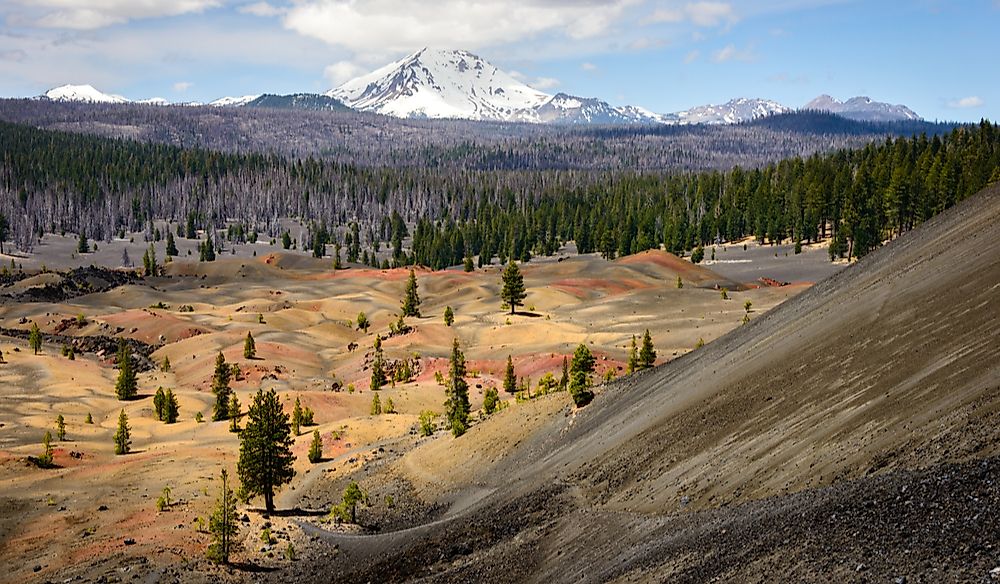
The United States is a vast country with a myriad of landscapes ranging from lofty mountains to sea coasts on the Atlantic and the Pacific oceans, and from fertile plains to massive stretches of lifeless desert land. Given its incredible diversity of natural features, the national parks of the country also have their distinct set of attractions. Some offer a peek into the earth’s molten interior in the form of volcanoes, geysers, hot springs, and a variety of other volcanic resources as mentioned below.
6. Yellowstone National Park
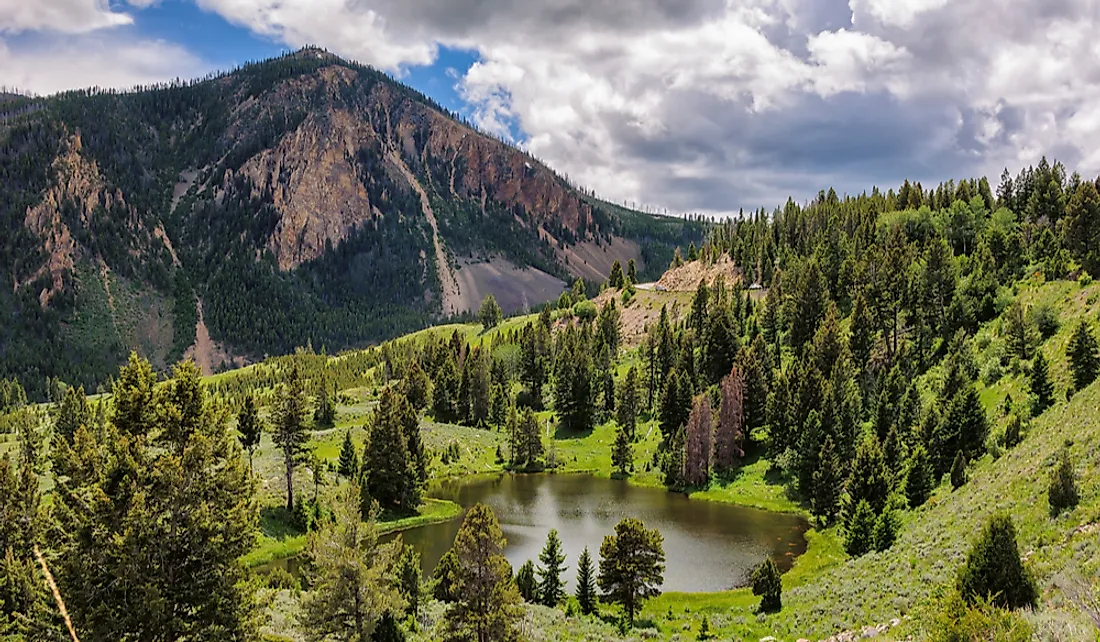
The oldest national park in America, Yellowstone National Park is most famous for its astounding volcanic features. It was established in 1872 and since then has served to enthral visitors from all over the world. The Yellowstone’s most notable features are its many geothermal features, especially the Old Faithful geyser. Nearly half of the planet’s geysers are concentrated in this park. Numerous lakes, rivers, canyons, and mountains contribute to the spectacular landscapes of the Yellowstone National Park. The Yellowstone Lake in this park is one of North America’s highest lakes. It occupies the Yellowstone Caldera, the continent’s biggest supervolcano, and an active one! The UNESCO has recognized the immense geological significance of this national park and designated it has a World Heritage Site. The park is also home to diverse flora and fauna including many threatened species.
5. Hawaiʻi Volcanoes National Park
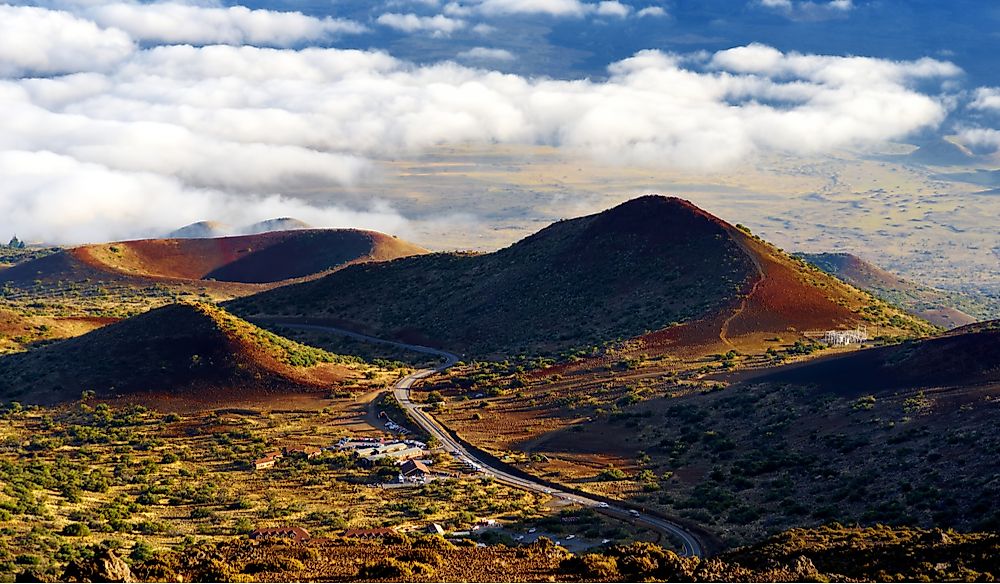
The Hawaiʻi Volcanoes National Park is another US national park encompassing volcanoes and associated volcanic features within its limits. It is located on the main island of Hawaii in the state of Hawaii. It was established in 1916. Two world-famous volcanoes, the Kīlauea and the Mauna Loa, are located here. The former is one of the planet’s most active volcanoes while the latter is the world’s largest shield volcano. The park is an ideal location for scientists to further their study on volcanism. Its outstanding natural values have given it recognition as a UNESCO World Heritage Site and an International Biosphere Reserve.
4. Lassen Volcanic National Park
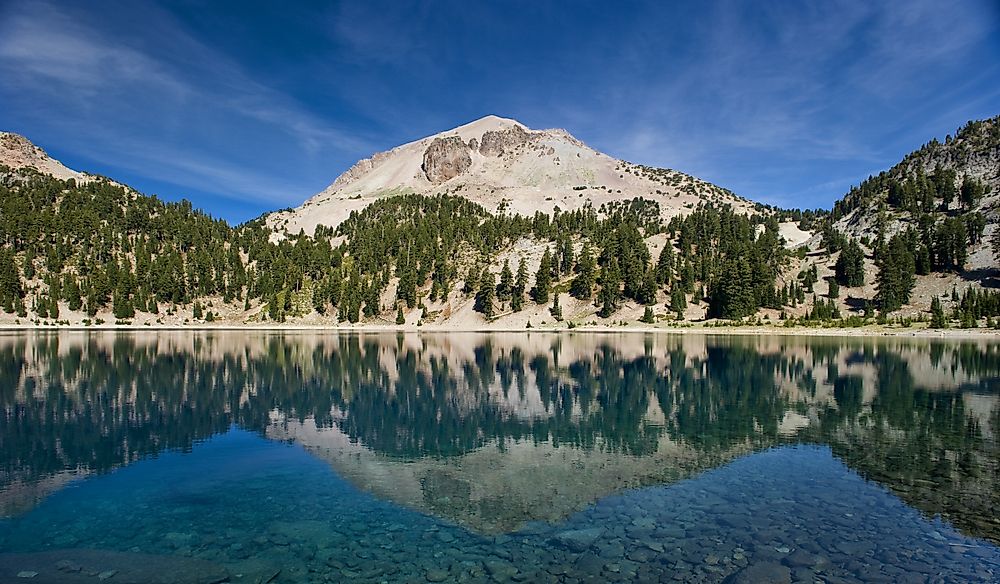
Located in northeastern California, the Lassen Volcanic National Park’s landscape is dominated by the world’s largest plug dome volcano, the Lassen Peak. The park was established in 1916 and since then has attracted many tourists by virtue of its amazing natural scenery. The subduction of the Gorda Plate below the North American Plate off the coast of California is responsible for volcanism in the park. Today, the volcanic action is visible in the form of boiling mud pots, hot springs, and volcanoes in the park. Another very interesting feature of the Lassen Volcanic National Park is the fact that it is among the few areas of the world where all four types of volcanoes are found. It has plug-dome, shield, strato, and cinder cone volcanoes.
3. Mount Rainier National Park
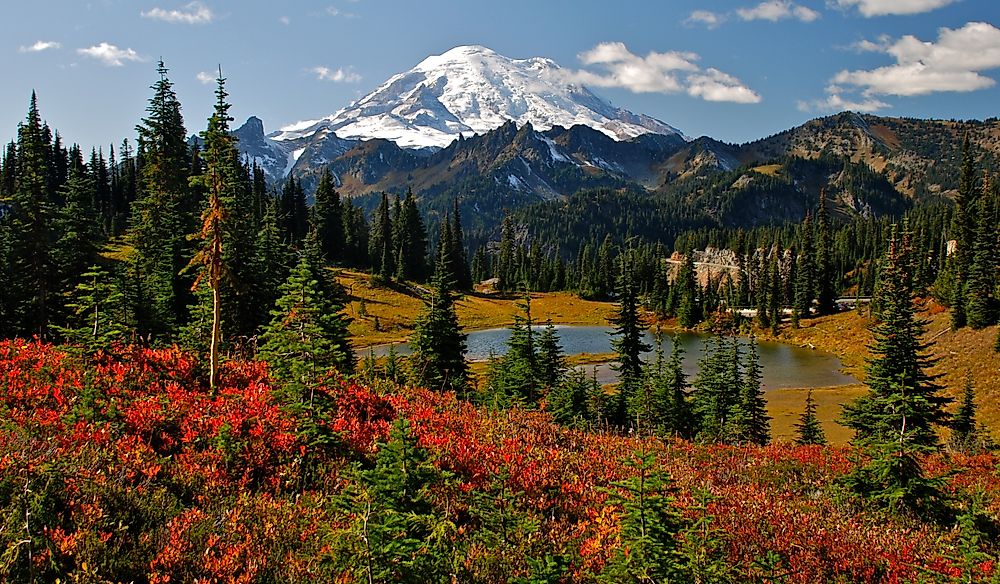
Founded in 1899, the Mount Rainier National Park straddles the border between Washington's Pierce County and Lewis County. Mount Rainier, a giant stratovolcano, is the central feature of this park. Its stunning landscape includes waterfalls, glaciers, valleys, subalpine meadows, and vast stretches of forest. Mount Rainier is popular for mountaineering activities and every year, thousands of climbers visit the park to execute a successful attempt to the summit.
2. Crater Lake National Park
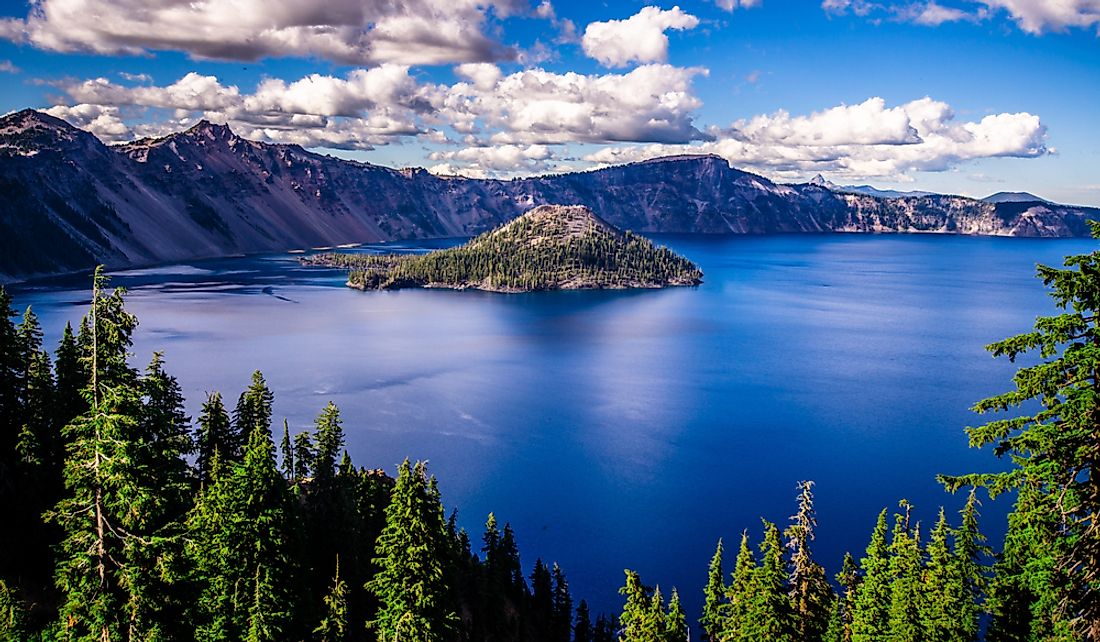
Located in southern Oregon, the Crater Lake National Park is another national park of the country featuring volcanoes. It was founded in 1902 to protect its immense natural wealth. As the name suggests, Crater Lake is the central feature of this park. The lake occupies a caldera of a destroyed volcano named Mount Mazama. Hills and forests surround the caldera. Crater Lake is the country’s deepest and the ninth deepest lake in the world. It is 1,949 feet deep at its deepest point. The caldera is nearly uniformly deep and the elevation of the rim ranges from 7,000 to 8,000 feet. The Crater Lake is an endorheic basin. It is fed entirely by precipitation and loses its water through evaporation and subsurface seepage.
1. Katmai National Park and Preserve
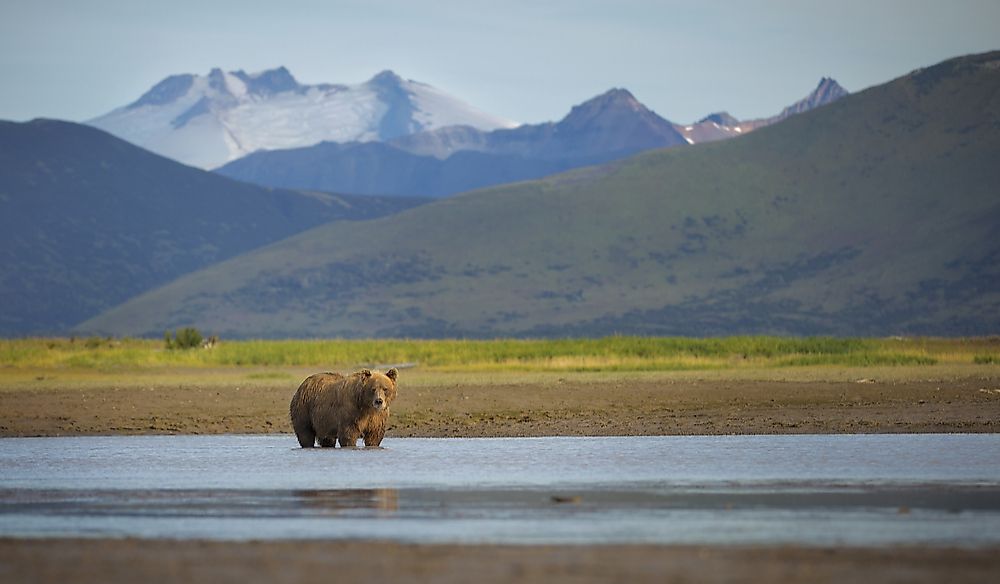
This protected area is located in southern Alaska and is well-known for its brown bear population and the Valley of Ten Thousand Smokes. The latter was witness to a major volcanic eruption in the recent past - the 1912 eruption of Novarupta volcano. The park gets its name from the Mount Katmai stratovolcano that is its central feature. A total of 18 individual volcanoes including 7 active ones are part of the national park's landscape.











